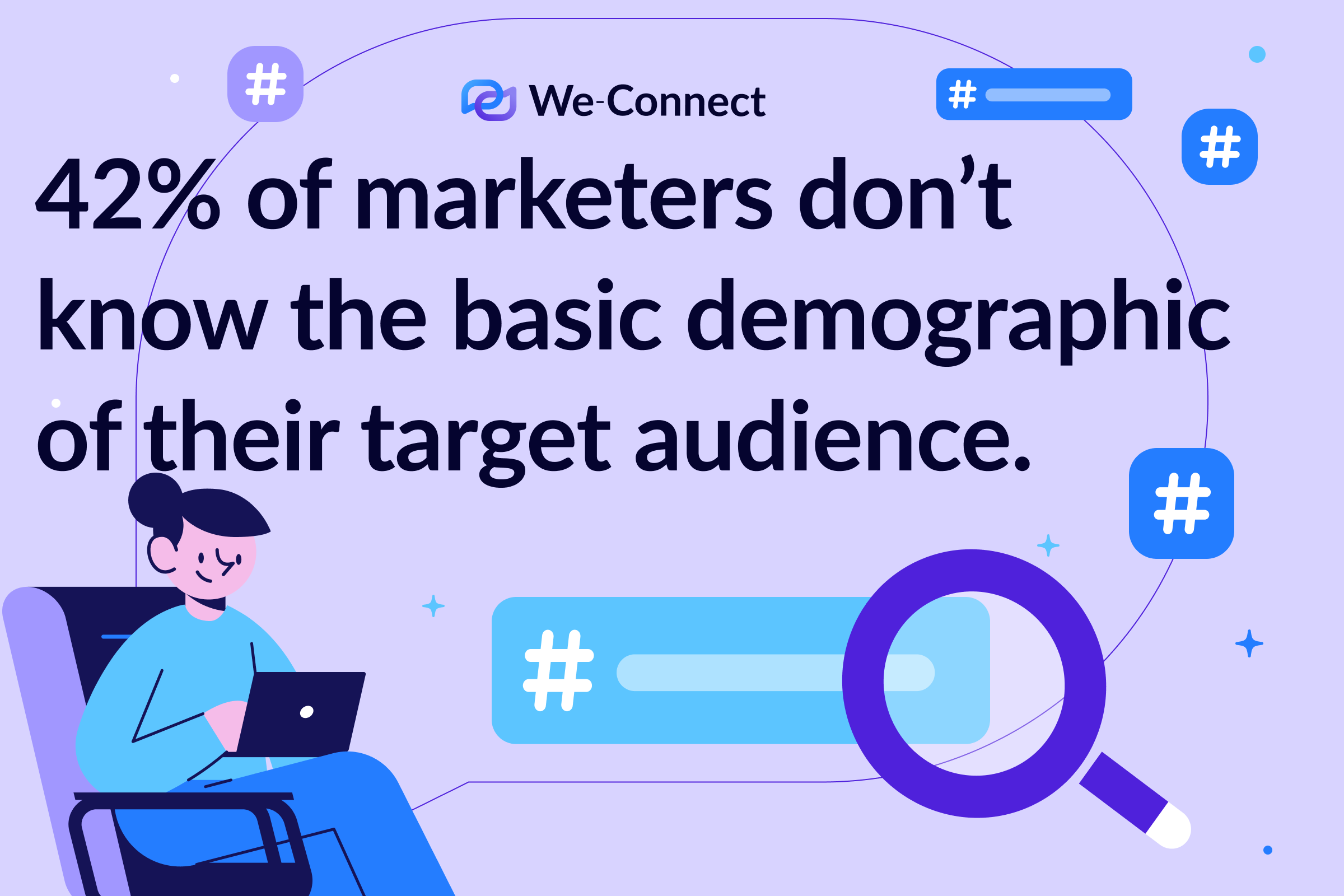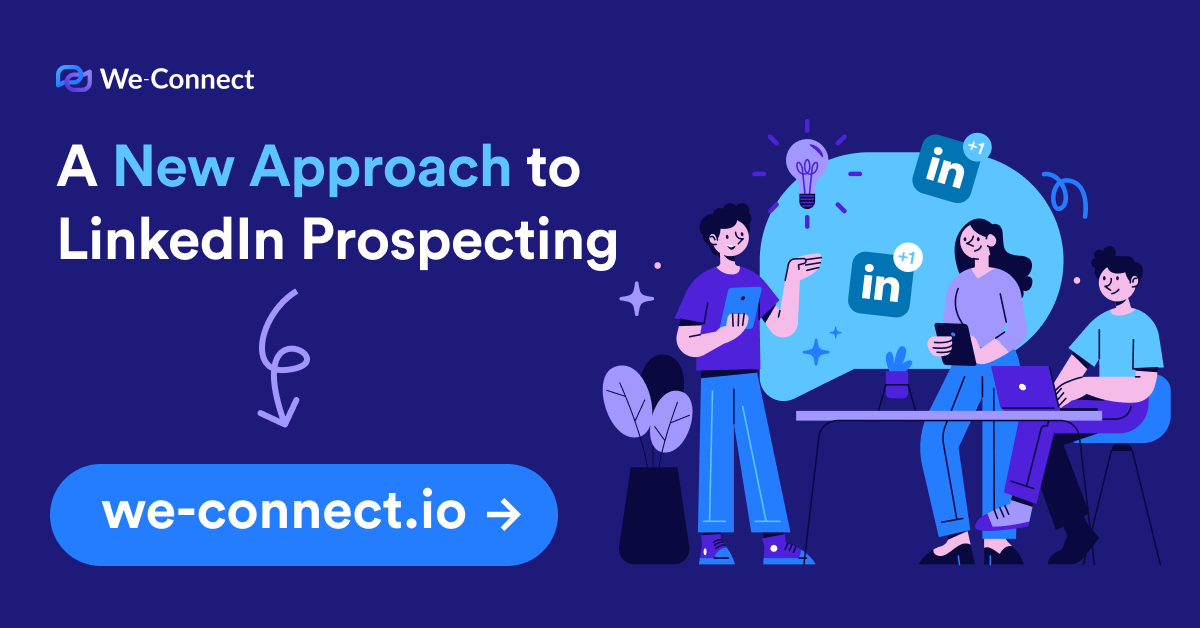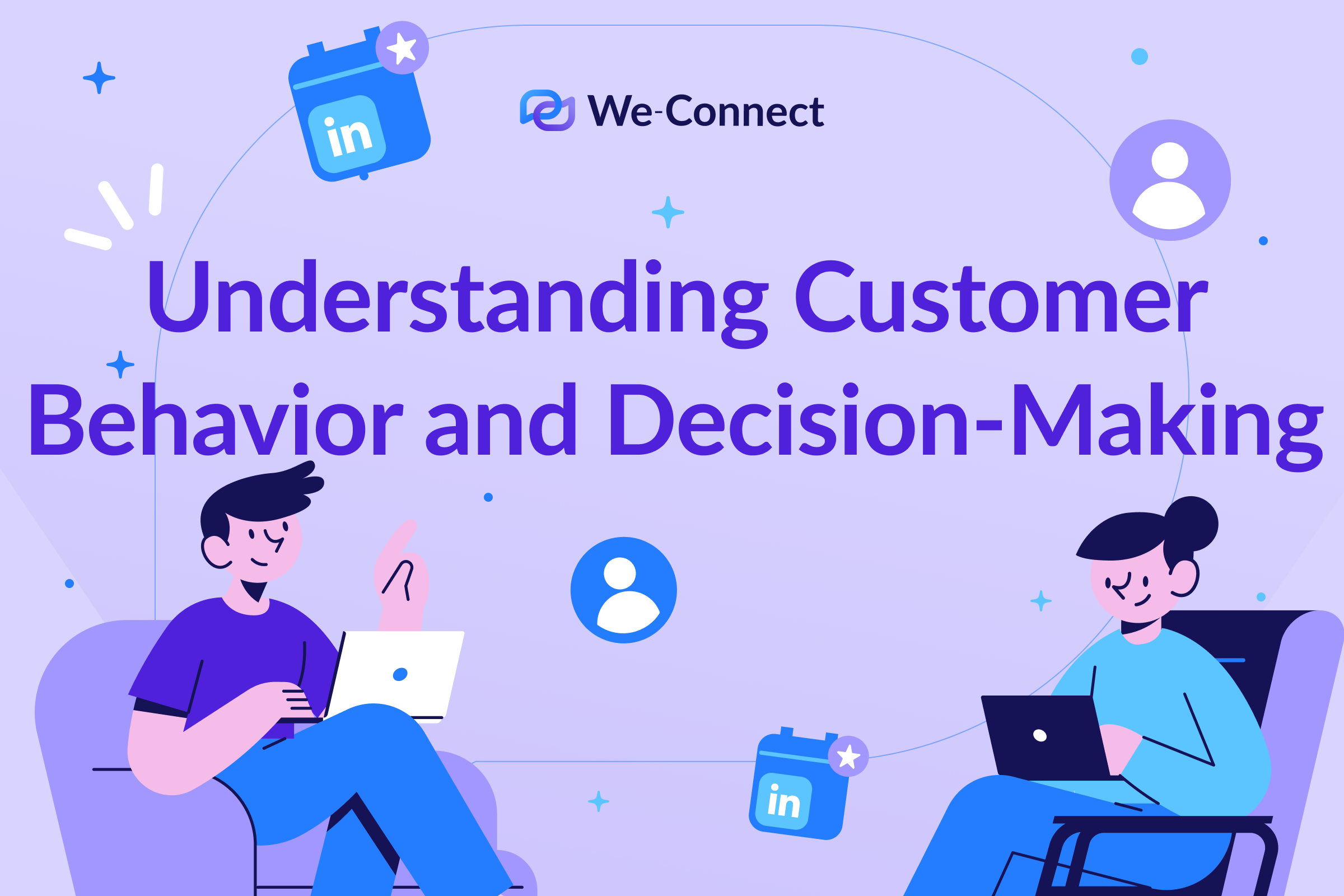When it comes to prospecting, understanding the psychology of your potential customers can significantly impact your success. We’re not saying you need to skip that MBA and switch to psychology, but knowing the basics can definitely help. That’s why in this article, we’ll dive into exactly that – talking about the ins and outs of how you can use the psychology of customer behavior to your advantage.
Table of Contents
The Decision-Making Process
There’s a lot to unpack when we’re talking about psychology. However, from a business perspective, it’s not all important. So, let’s start with what is important: how your customers make decisions. In simple, customers typically go through several stages before landing on a product – especially if it’s a more expensive product. Here’s that process:
- Recognition of a need or problem: The process begins with your customer recognizing that there is a need or problem to be addressed. Their need or problem doesn’t necessarily need to be a necessity, however – such as a desire for self-improvement, a change in circumstances, or the identification of a gap or challenge.
- Information search: Once the need or problem is recognized, customers start seeking information. They gather data, conduct research, and explore various sources to learn more about potential solutions or options available to them. This stage involves actively seeking information through online research, talking to experts, reading reviews, or seeking recommendations from others. Your content game is important in this stage! Learn how to turn LinkedIn posts into prospects here.
- Evaluation of alternatives: After gathering relevant information, customers typically evaluate their options. They’ll look at things like features, benefits, cost, quality, suitability, and any discernable differentiators. This stage involves weighing the pros and cons of each alternative and assessing how well they align with their needs and preferences.
- Decision-making: Once the alternatives have been evaluated, your soon-to-be customers can make their final decision. In this stage, they’ll select the option they believe best meets their needs and provides the most value. This decision is influenced by personal preferences, priorities, budget constraints, and any specific criteria or considerations they may have.
- Implementation: After making the decision, individuals move forward with implementing their choice. This could involve making a purchase, signing a contract, or taking any necessary steps to put their decision into action. Implementation may also involve planning, setting goals, and establishing a timeline for the chosen solution.
- Post-purchase evaluation: Following implementation, individuals reflect on their decision and evaluate the outcome. They assess whether their choice met their expectations, solved the problem, or fulfilled the need they initially identified. This evaluation helps them gauge their satisfaction and may influence their future decisions and recommendations to others.
You can use your buyer persona to figure out how your customers make decisions in more detail!

Learn Cognitive Biases To Boost Your Prospecting
There are biases everywhere. And, to be a successful prospector, you should know what they are. Specifically, biases are errors in our thinking that affect our judgment and decision-making. As a prospector, being aware of these biases can help you navigate through them and leverage them to your advantage (hopefully ethically). Let’s explore a few common cognitive biases and their impact on prospecting:
- Confirmation Bias: Confirmation bias leads people to seek information (and products) that support their beliefs while ignoring contradictory evidence. To overcome this bias, you need to provide well-rounded information that addresses both the pros and cons of your offering.
- Anchoring Bias: The anchoring bias occurs when people rely heavily on the first piece of information they receive. To take advantage of this bias, you should focus on your marketing campaigns as well as be quick to book calls with prospects.
- Availability Bias: The availability bias refers to people’s tendency to rely on readily available information when making decisions. Try and highlight success stories and positive customer testimonials to make your offering more salient and memorable.
- Social Proof Bias: Social proof is a powerful bias that influences individuals to conform to the behavior or opinions of others. Leverage this bias by showcasing testimonials or case studies from satisfied customers. We talk about how you can use testimonials to your advantage here.
- Loss Aversion Bias: Loss aversion is the tendency for people to strongly prefer avoiding losses rather than acquiring gains. To benefit from this, frame your offering in terms of the potential losses customers may experience by not using your product.
There’s no better social proof than testimonials. Learn how you can win more here.

How To Be Persuasive in Prospecting?
No, you’re not a used car salesman, but that doesn’t mean you can’t use persuasive techniques to sell your company’s product. Learning the principles of persuasion can significantly enhance your prospecting success. In fact, several persuasive techniques have been proven effective in influencing decision-making. Let’s explore a few of them:
- Reciprocity: Reciprocity is the idea that people feel obligated to repay favors or acts of kindness. Offer value upfront by sharing helpful resources, insights, or free consultations, triggering a sense of reciprocity and increasing the likelihood of receiving something in return.
- Scarcity: Scarcity is another powerful principle of persuasion. People tend to desire things that are limited or in high demand. Create a sense of urgency or exclusivity by offering limited-time promotions, highlighting the scarcity of your offering.
- Authority: Authority plays a significant role in shaping our decisions. When prospects perceive you as an expert or authority in your field, they are more likely to trust and follow your recommendations. Showcase your expertise through thought leadership content, certifications, or industry recognition to establish authority in prospecting interactions.
- Consistency: Consistency is the idea that people strive to act in alignment with their past commitments or beliefs. By gaining small, initial commitments from prospects, such as subscribing to your newsletter or attending a webinar, you can increase the likelihood of larger commitments in the future.

Building Rapport and Trust With Leads
Building rapport and trust with your prospects is vital for successful prospecting. It’s pretty simple: people are more likely to do business with those that they like and trust. But, how can you get people you don’t even know to like and trust you?
- Active Listening: Active listening may just be the most important skill you can learn. It’s critical when showing genuine interest in your prospects’ needs and challenges. If active listening isn’t your strong suit, we recommend asking questions.
- Empathize: Put yourself in your prospects’ shoes and try to see the world from their perspective. Show empathy by acknowledging their challenges and demonstrating that you genuinely understand their situation. Again, this really goes hand in hand with active listening.
- Personalize Everything: Tailor your communication to each prospect, demonstrating that you have taken the time to understand their specific situation. Highlight how your offering addresses their unique needs and challenges, showing that you are invested in their success.
- Relationship Management: Each time you have a call with a lead, you can continue to grow that relationship. It’s really in the little things – like remembering things about them (like what they are doing next weekend) or where they’re located.

Conclusion
Understanding the psychology of your prospects is a powerful asset in the world of prospecting. While your certainly not going to close any deals just with pschology, it just may help you convert a prospect that’s on the fence about your product. Remember, prospecting is about understanding and connecting with people. Combining your expertise with a deep understanding of customer psychology can effectively engage your prospects and pave the way for meaningful business relationships.
Remember, successful prospecting is an ongoing learning process. Continuously refine your skills, adapt your approach, and stay attuned to your prospects’ ever-evolving needs and preferences. Keep growing with We-Connect.
